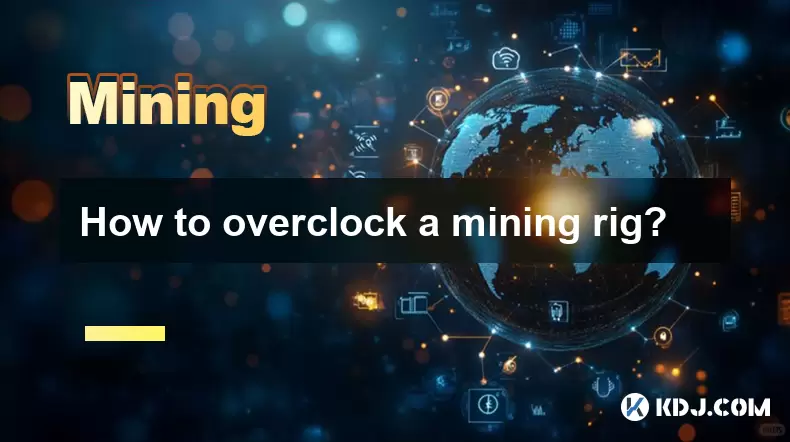-
 Bitcoin
Bitcoin $118,209.3536
1.16% -
 Ethereum
Ethereum $3,151.7546
5.98% -
 XRP
XRP $2.9277
2.35% -
 Tether USDt
Tether USDt $1.0000
0.00% -
 BNB
BNB $689.7099
1.26% -
 Solana
Solana $163.4270
1.91% -
 USDC
USDC $1.0000
0.02% -
 Dogecoin
Dogecoin $0.1983
3.74% -
 TRON
TRON $0.3008
0.51% -
 Cardano
Cardano $0.7435
2.86% -
 Hyperliquid
Hyperliquid $47.6547
-0.48% -
 Stellar
Stellar $0.4625
2.79% -
 Sui
Sui $3.9921
2.71% -
 Chainlink
Chainlink $16.0608
4.23% -
 Hedera
Hedera $0.2348
1.56% -
 Bitcoin Cash
Bitcoin Cash $496.6985
1.25% -
 Avalanche
Avalanche $21.9038
5.41% -
 UNUS SED LEO
UNUS SED LEO $8.8356
-1.88% -
 Shiba Inu
Shiba Inu $0.0...01364
5.31% -
 Toncoin
Toncoin $3.1102
4.35% -
 Litecoin
Litecoin $95.9756
3.59% -
 Polkadot
Polkadot $4.0925
5.78% -
 Monero
Monero $333.7622
-1.44% -
 Uniswap
Uniswap $9.1968
2.25% -
 Bitget Token
Bitget Token $4.6378
6.23% -
 Pepe
Pepe $0.0...01282
6.77% -
 Dai
Dai $1.0002
0.03% -
 Ethena USDe
Ethena USDe $1.0005
0.00% -
 Aave
Aave $329.9143
4.49% -
 Bittensor
Bittensor $441.4995
6.89%
How to overclock a mining rig?
Overclocking a mining rig boosts hash rate by adjusting GPU and memory settings, but requires careful management of heat, power, and stability to avoid hardware damage.
Jul 16, 2025 at 04:08 pm

Understanding the Basics of Mining Rig Overclocking
Overclocking a mining rig refers to adjusting the hardware settings beyond factory defaults to extract more performance, particularly in terms of hash rate. The primary components that are targeted during overclocking include GPUs (Graphics Processing Units) and sometimes the memory (VRAM). While the process can significantly boost mining efficiency, it also increases power consumption, heat output, and potentially reduces the lifespan of the components if not done carefully.
Before diving into the actual steps, it's crucial to understand your mining rig’s current configuration, including the GPU model, BIOS version, and mining software being used. Not all GPUs respond the same way to overclocking, so researching the best practices for your specific model is essential. Additionally, ensure your cooling system is sufficient to handle the increased thermal load that comes with overclocking.
Preparing Your System for Overclocking
Before you begin tweaking performance settings, make sure your mining rig is in optimal condition. Start by updating the GPU drivers and mining software to their latest versions to avoid compatibility issues or bugs that may interfere with stability.
Install monitoring tools such as MSI Afterburner, GPU-Z, or NiceHash QuickMiner, which allow real-time tracking of temperature, clock speeds, voltage, and fan speed. These tools are invaluable when testing the effects of your overclocking adjustments.
Ensure that your power supply unit (PSU) has enough headroom to support the increased power draw. A weak or insufficient PSU can lead to system instability or even hardware damage. It's also wise to clean the GPU fans and heatsinks to maximize airflow and reduce thermal throttling.
Adjusting Core Clock and Memory Clock Settings
Using MSI Afterburner or similar software, start by making small adjustments to the core clock and memory clock. Begin with increasing the core clock by 10–25 MHz increments and monitor the impact on hash rate and stability. If the mining software reports errors or crashes occur, reduce the core clock slightly.
Next, adjust the memory clock in small steps, typically starting with 50 MHz increases. Some GPUs benefit more from memory overclocks than others, so observe how each change affects the hash rate. Pay attention to any signs of instability such as screen artifacts, crashes, or error messages in your mining software logs.
It’s often beneficial to lower the voltage while increasing clocks—a technique known as undervolting—to maintain power efficiency and reduce heat. Many miners find a balance between higher clocks and lower voltage to optimize both performance and energy efficiency.
Fine-Tuning Fan Speed and Temperature Management
As you push your GPUs harder, they will generate more heat. To prevent overheating, adjust the fan curve within MSI Afterburner or use third-party fan control tools. Aim to keep temperatures below 85°C for most modern GPUs, although some models can tolerate higher temps for short periods.
Customize the fan speed to increase gradually with temperature rather than running at full speed constantly, which can be noisy and wear out the fans faster. Monitoring tools like HWInfo or Open Hardware Monitor can help track thermal behavior over time.
Consider improving the physical environment around your mining rig. Add extra case fans, ensure proper ventilation, and avoid placing the rig in enclosed spaces. Dust buildup can severely impact cooling performance, so regular cleaning of air filters and GPU coolers is recommended.
Testing Stability and Performance After Overclocking
After applying your overclock settings, run a stress test using mining software such as Claymore’s Dual Miner, PhoenixMiner, or NBMiner. Let the system run for at least 30 minutes to an hour under full load to check for stability, temperature spikes, and hash rate consistency.
If the system crashes or experiences graphical glitches, revert to previous settings and try a more conservative overclock. Keep a log of what settings worked best and what caused instability. This helps in quickly diagnosing issues and optimizing future setups.
Use benchmarking features within your mining software to compare hash rates before and after overclocking. Look for improvements in MH/s or sol/s depending on the algorithm you're mining (e.g., Ethash, KawPow, etc.). Record these metrics to evaluate the effectiveness of your tuning efforts.
FAQ: Frequently Asked Questions About Overclocking a Mining Rig
Q: Is overclocking safe for my mining rig?
A: Overclocking can be safe if done cautiously. However, pushing hardware too far without adequate cooling or power can lead to premature component failure or system instability.
Q: Can I overclock integrated GPUs or only discrete ones?
A: Integrated GPUs generally lack the flexibility and performance needed for mining, let alone overclocking. Most serious miners rely on discrete graphics cards that offer better overclocking potential.
Q: Does overclocking void my GPU warranty?
A: Some manufacturers consider overclocking as tampering, which may void the warranty. Check your GPU manufacturer’s policy regarding warranty terms and whether tools like MSI Afterburner affect coverage.
Q: What should I do if my mining rig becomes unstable after overclocking?
A: Revert to default settings immediately. Then, apply smaller increments and test thoroughly. Ensure your power supply, cooling, and software are all optimized for stable operation.
Disclaimer:info@kdj.com
The information provided is not trading advice. kdj.com does not assume any responsibility for any investments made based on the information provided in this article. Cryptocurrencies are highly volatile and it is highly recommended that you invest with caution after thorough research!
If you believe that the content used on this website infringes your copyright, please contact us immediately (info@kdj.com) and we will delete it promptly.
- Crypto ROI Revolution: Is BFX the Next Big Thing?
- 2025-07-16 21:30:13
- Dogecoin, HBAR, and Partnerships: A Tale of Memes vs. Utility
- 2025-07-16 21:30:13
- Cha-Ching! That £2 Coin Could Be Worth a Mint!
- 2025-07-16 22:10:12
- Meme Coin Mania Meets Crypto Payroll & Burger Bites: A New York Minute on the Latest Trends
- 2025-07-16 22:10:13
- China Gold Market: Investment and Focus in 2025
- 2025-07-16 22:15:13
- FxWirePro: Token Unlock Tsunami – Navigating the ARBUSD Waters
- 2025-07-16 22:15:13
Related knowledge

How are crypto mining profits taxed?
Jul 14,2025 at 12:28am
Understanding Cryptocurrency Mining and TaxationCryptocurrency mining involves validating transactions on a blockchain network and earning rewards in ...

How to keep a mining rig cool
Jul 12,2025 at 01:42pm
Understanding the Importance of Cooling in Mining RigsCryptocurrency mining is an intensive process that places heavy demand on hardware components, p...

How to mine crypto on a gaming PC
Jul 16,2025 at 12:00pm
What is Crypto Mining on a Gaming PC?Crypto mining involves using your computer's processing power to validate transactions on a blockchain network. A...

How to set up a crypto miner
Jul 16,2025 at 09:14am
Understanding Ethereum Gas Fees: What Are They and How Do They Work?Ethereum gas fees are a fundamental aspect of the network, representing the cost r...

Can you mine crypto on a laptop?
Jul 16,2025 at 02:21am
Is It Feasible to Mine Cryptocurrency on a Laptop?Mining cryptocurrency on a laptop is technically possible, but feasibility depends heavily on the ha...

Is crypto mining worth it?
Jul 16,2025 at 01:21am
Understanding the Basics of Crypto MiningCrypto mining refers to the process of validating transactions on a blockchain network by solving complex mat...

How are crypto mining profits taxed?
Jul 14,2025 at 12:28am
Understanding Cryptocurrency Mining and TaxationCryptocurrency mining involves validating transactions on a blockchain network and earning rewards in ...

How to keep a mining rig cool
Jul 12,2025 at 01:42pm
Understanding the Importance of Cooling in Mining RigsCryptocurrency mining is an intensive process that places heavy demand on hardware components, p...

How to mine crypto on a gaming PC
Jul 16,2025 at 12:00pm
What is Crypto Mining on a Gaming PC?Crypto mining involves using your computer's processing power to validate transactions on a blockchain network. A...

How to set up a crypto miner
Jul 16,2025 at 09:14am
Understanding Ethereum Gas Fees: What Are They and How Do They Work?Ethereum gas fees are a fundamental aspect of the network, representing the cost r...

Can you mine crypto on a laptop?
Jul 16,2025 at 02:21am
Is It Feasible to Mine Cryptocurrency on a Laptop?Mining cryptocurrency on a laptop is technically possible, but feasibility depends heavily on the ha...

Is crypto mining worth it?
Jul 16,2025 at 01:21am
Understanding the Basics of Crypto MiningCrypto mining refers to the process of validating transactions on a blockchain network by solving complex mat...
See all articles

























































































